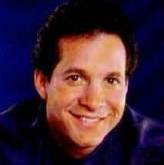"Whatever life holds in store for me, I will never forget these words: "With great power comes great responsibility." This is my gift, my curse."
Peter Parker/Spider-Man
From the onset of Writer/Director Matthew Vaughn’s adaptation of the Marvel comic book of the same name, KICK-ASS, we’re immediately thrust into an opening credit cloud reminiscent of Richard Donner's in SUPERMAN where production companies “Marv” and “Plan B” zoom past us in a New York City skyline which resemble obliterated fragments of Superman’s native Krypton. It’s fitting that the primary colored “Marv” seems like a dilapidated namesake of the popular comic book publisher “Marvel”, but as a cinematic marvel, KICK-ASS ain’t. What the film is, however, is a wholly manufactured male fantasy replete with animated violence a gogo, a fetishized Catholic schoolgirl uniform and enough foul language to satisfy anyone suffering from vulgarity withdrawal. As a film that is assumedly studied of the vast and ever-evolving comic book universe, its own attempts at originality are futile and clichéd with thematic ideas that come across as something the writers may have overheard in a middle school hallway peopled with comic book aficionados. That the film opens in the clouds is just where the writers’ minds exist and where the film belongs confirming this element of heightened fantasy.
Enter the narrator, Dave Lizewski (Aaron Johnson), the ordinary alter-ego of the titular and not-so-extraordinary “Kick-Ass” and a self-proclaimed lover of comic books who is frustrated by the fact that everyone in his orbit gives in to thugs and that no one stands up for the common people when danger is imminent. After a run-in with a pair of lowlifes (and a car!) that nearly cripples him (simultaneously displayed as a ‘kids-don’t-try-this-at-home’ warning against vigilantism), David undergoes a surgical procedure that provides him a metal skeletal structure that helps secure his mortal superiority which he likens to Wolverine’s internal mechanics. Like the costume that he dons, David is still a little green and like the stripes that adorn it, he’s still a bit yellow, but even as he fumbles, he’s not entirely a coward either. But neither was Travis Bickle in Martin Scorsese’s classic, TAXI DRIVER, which the film has more in common with than say, BATMAN, SPIDER-MAN or SUPERMAN. At least these films (and comic books) contained a city/nationwide and/or global threat with scores of multiple lives at stake compliments of a deranged nemesis.
Kick-Ass’s nemesis: Frank D’Amico (Mark Strong), a stereotypical Italian kingpin with a penchant for orange (clothes, furnishings and interior design) and whose employees’ only value to the film is to supply an ample body count upon their demise. His taste in art is equally grisly as he owns an ochre-colored painting/lithograph of a skull that graces his kitchen wall and a pair of Andy Warhol’s “Gun” in his private office that together celebrates the film’s reflexivity of violence. Frank’s inside man in the police force has an even more intimidating moniker: Detective Gigante (Xander Berkeley). D’Amico’s characterization is introduced in a scene suggestive of the one in Director Sam Raimi’s DARKMAN when the crooked Robert Durant (Larry Drake) removes a man’s finger with a cigar cutter. Frank inflicts the same pain upon one of his own with a pair of heavy-duty pliers which becomes the crux of the film’s threat-less agenda and possibly the film’s greatest flaw - - that there is no ultimate threat to mankind or the Gotham where the film takes place - - D’Amico is not only hell-bent on taking out Kick-Ass, but his only other intention is to protect the integrity of his drug-ring while simultaneously killing his own men in his lumber yard which acts as a front for his cocaine-running organization.
David’s superhero status is anything but super, yet his exploits spawn a comic book series, a costume line and even “Kick-Ass Cappuccino”. His fame reaches the world wide web wherein he inspires a father and daughter duo, widower Damon Macready a.k.a. “Big Daddy” (Nicolas Cage) and Mindy Macready a.k.a. “Hit-Girl” (Chloe Moretz), the latter of whom has a battery of foul language that is as hard-hitting as her fighting abilities, to publicly show off their own superhero-like outfits while engaging in their own brand of renegade vigilantism. It becomes a detriment that Hit-Girl’s course profanity and shameless killing sprees nearly hinder the charm that she so obviously exudes. The Macready’s relationship when compared to the Lizewski household is a peculiar one in that there exists no mother figure in either - - which probably accounts for the film’s numbing barrage of expletives that pass every character’s lips like bullet-fire from a pistol. Elizabeth McGovern, a fine actress in her own right, is given less than 15 seconds of screen-time as Dave’s mother before succumbing to a fatal aneurism over breakfast. The late Mrs. Macready is featured as a drawn character in the film’s only animated sequence whose inability to pay the bills after her husband is wrongfully sent to prison (c/o the corrupt D’Amico) abuses drugs to the point of suicide prior to giving birth to their daughter. The Macready’s interaction with one another resembles that of a father and son playing catch at the ballpark more so than the healthy rapport a father figure has with his daughter. This is later intimated when D’Amico (while holding a pistol to Hit-Girl’s forehead) exclaims how much he wishes his son, Chris a.k.a. “Red Mist” (Christopher Mintz-Plasse), were more like her and had the capacity of her highly-skilled fighting talents.
The violence that ensues verges into Tarantino-esque territory (punctuated in one fight scene with soundtrack-sampling by Ennio Morricone), although what unfolds can only be characterized as senselessly mind-numbing, contemporary video-game warfare that traps so many films of this caliber by making their characters worthlessly expendable while getting a chuckle out of audiences. What makes a film purely Tarantino-esque is that characters in Quentin’s films engage in ‘higher’ (left-) brain processing and that their destruction is dependent on not only their physical actions, but how they engage in a dialogue with one another. Another highlight to QT’s films is that his characters are so memorable that they become something of a legend which is achieved compliments of a strong screenplay. When it’s all said and done, there is nothing entirely redeemable about KICK-ASS in the least. His adventures are hardly inspiring to any audience member wanting to become a superhero or even an above-average hero especially after undergoing various tortures such as being stabbed in the chest, run over by a car, beaten with a baseball bat, a pair of brass knuckles ...... Even Dave’s bumbling as a normal guy-cum-superhero comes with its own baggage of adolescent awkwardness. And not only does he have to wrestle with two identities, add to the mix a third sense of self as he pretends to be gay to get closer to the girl he loves, Katie Deauxma (Lyndsy Fonseca), which predictably releases a series of immature jokes at Dave’s expense from his peers - - and invites more chuckles out of the audience.
Cursing throughout the film is not only habitual but almost as present as automatic speech fillers like ‘er’ and ‘um’ which makes more valid the lack of language abilities and ‘lower’ (right-) brain functioning of its characters. Neurologists have also released studies confirming that ‘illiterate’ swear words are about four times more remembered than ‘educated’ words in traditional language. So apart from its other major accolades and accomplishments GONE WITH THE WIND has amassed since 1939, it’s line, “Frankly, my dear, I don’t give a damn.” was chosen as the #1 movie quote by the American Film Institute and cost producer David O. Selznick a legendary $5,000; more of a risk to include in the film against the period’s stringent Hollywood Production Code than the contemporary rapid-fire assault on the senses and the ears of current audiences, wouldn’t you say?
After the film’s bloody conclusion, Red Mist alters the color scheme of his costume to orange (continuing his father’s color of choice) as Kick-Ass and Hit-Girl literally fly off into the sunset like a classic Western but with aerial technology. Life seems back to normal before Red Mist (rather resembling the tortured character of James Franco as “New Goblin” after his father’s death in SPIDER-MAN 2 & 3) pulls a gun on the audience and fires at point-blank range as the screen goes black - - which maintains the film’s treatise and just about makes all the violence that happened before it consistent; this time, inflicting more on its viewers. *Regrettable sigh*
If one were to disavow their suspension of disbelief (which I did on numerous occasions), another curiosity is the film’s depiction of vanity license plates. Is the significance of the “Kick-Ass” license plate affixed to the cab destroyed in the film’s opening minutes supposed to support the fact that Kick-Ass himself has become a Gotham icon? How does Red Mist get his “Red Mist” vanity plate so quickly when it typically takes 6-12 weeks to get one delivered in the mail?
P.S. As an aside, keep in mind that no screen ‘daughter’ in the history of cinema kicked more ass than Ann Blyth’s “Veda Pierce Forrester” in MILDRED PIERCE - - all without uttering one obscenity.







